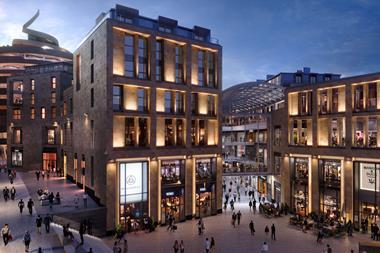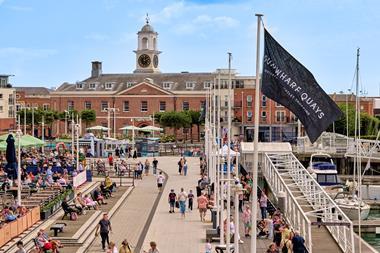What a difference a few years can make.
What a difference a few years can make. Only five years ago, retailers – and for that matter consumers – could barely keep pace with the number of retail property developments working their way through the pipeline.
Thanks to macro economic conditions, of course, all that has changed. Last year only three major developments threw open their doors. And now the next significant opening isn’t scheduled until 2013, when Trinity Leeds makes its debut. Competition for the right space in the right location is greater than ever before.
The glory days of plentiful development may be over for now, but that’s not to say development activity is dead in the water. While mega schemes will be few and far between in the UK, many believe that much smaller scale development is where the key opportunities lie.
What’s more, a raft of planning policies affecting the sector could in theory promise developers a potentially less contentious planning process. Aside from the fact that small developments necessitate less risk, it’s what many shoppers want; an interesting shopping environment crammed with prime retail brands and, where relevant, a leisure offer to boot. Brewery Square in Dorchester and Boxpark in London’s Shoreditch are cases in point.
Ultimately, this is a time in which developments need to evolve if they are to keep the hordes flocking, and there are many examples of centres that are doing just that. Parkway in Newbury, Birmingham’s Cube scheme and Meadowhall in Sheffield are among those that have or are planning to add space, and others such as Bluewater in Kent are enhancing their environments with events venues. Even the universally popular designer outlets are having to adapt their formula with an improved leisure offer.
But despite the welcome focus on smaller scale developments, and the fact there is much interesting work going on in the adaptation of shopping destinations to meet changing consumer requirements, it is important to look at the reality of UK retail property as a whole.
There were reports earlier this month of a worrying north-south divide in the UK when it comes to retail property vacancy rates.
The feature on London’s up-and-coming shopping destinations certainly shows just how immune the capital can be from wider issues facing UK retail property. London remains full of promise. The sheer weight of demand for prime retail space in the capital is resulting in a number of exciting new retail areas – fuelled further by Crossrail and, of course, the much anticipated Olympics this summer. Will the Games truly benefit retailers? Again, some question whether the benefit will extend much beyond London – despite a number of events being held further afield.
Uncertainty hangs in the air – not just about the extent of the supposed Olympics effect, but the retail property sector as a whole. Discussions about the problems facing the UK high street, for one, couldn’t be more prominent. But there are still factors that promise to continue boosting the UK’s reputation as home to some of the best shopping destinations in the world.


























No comments yet